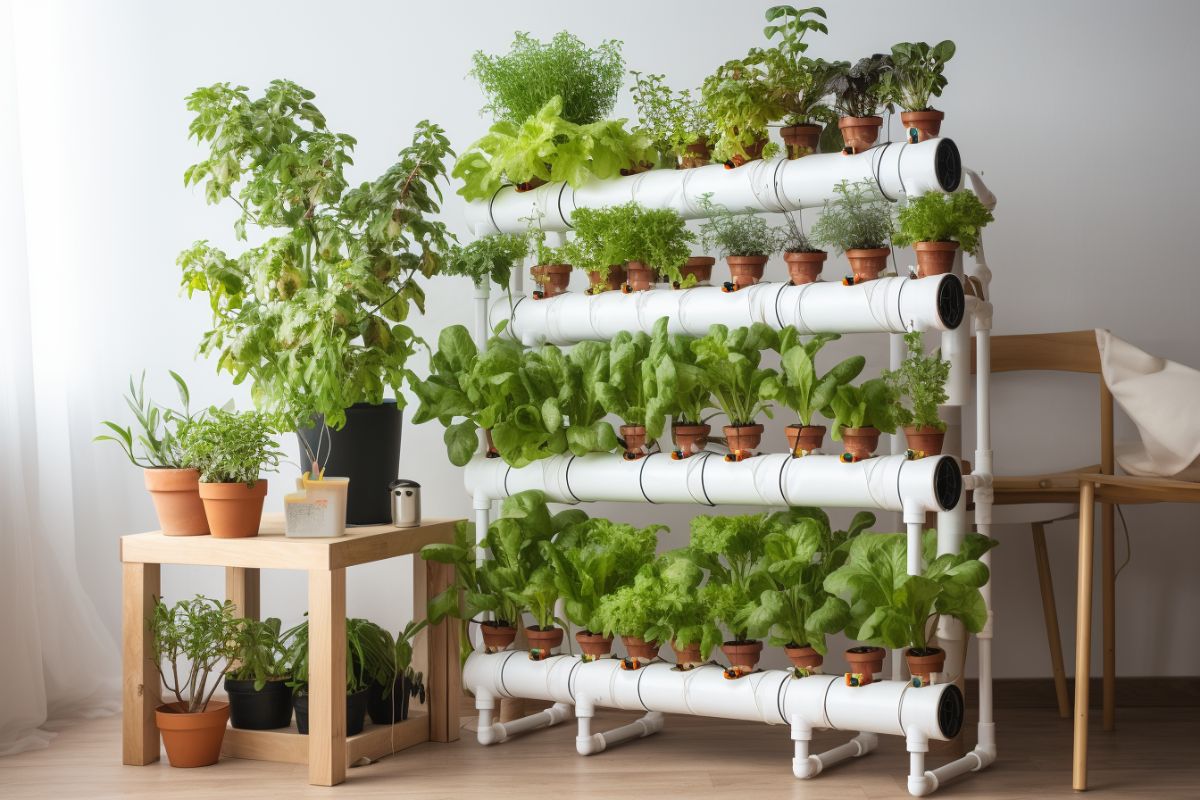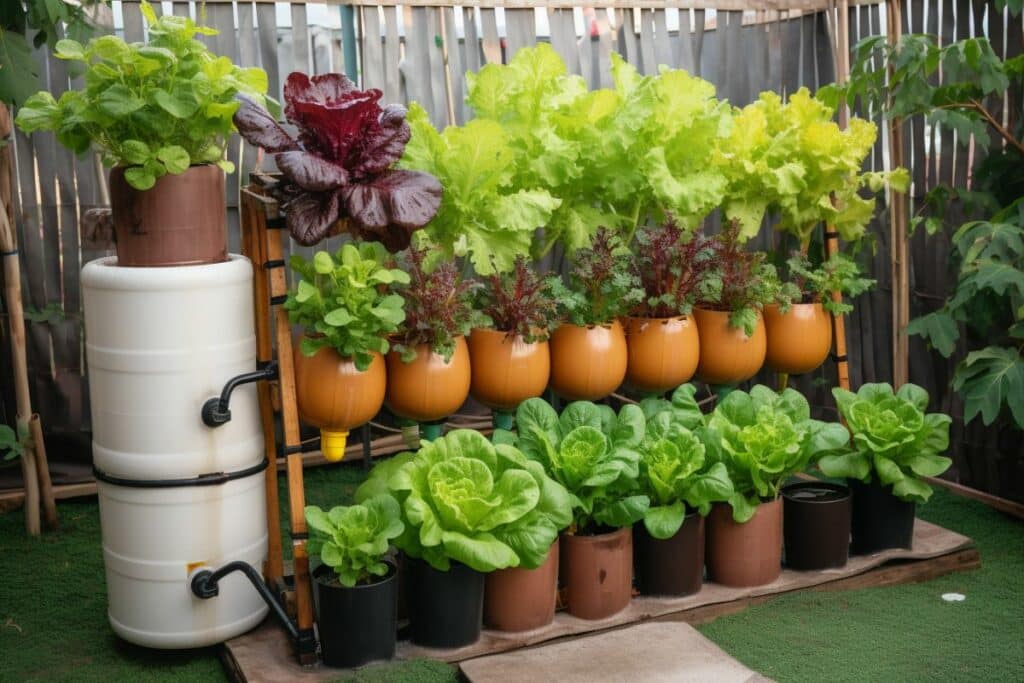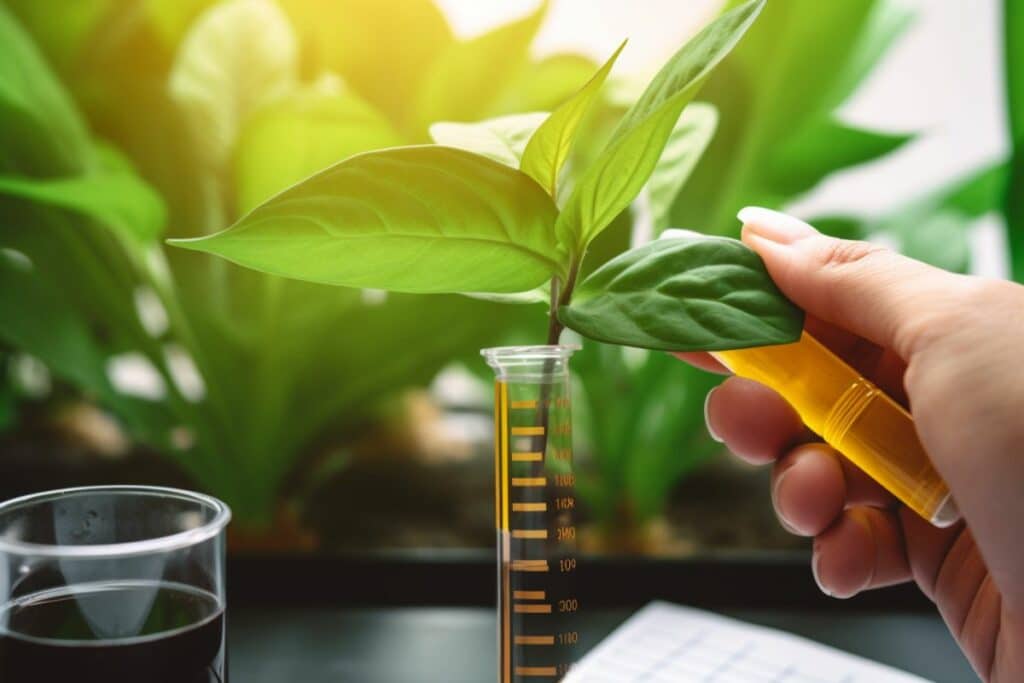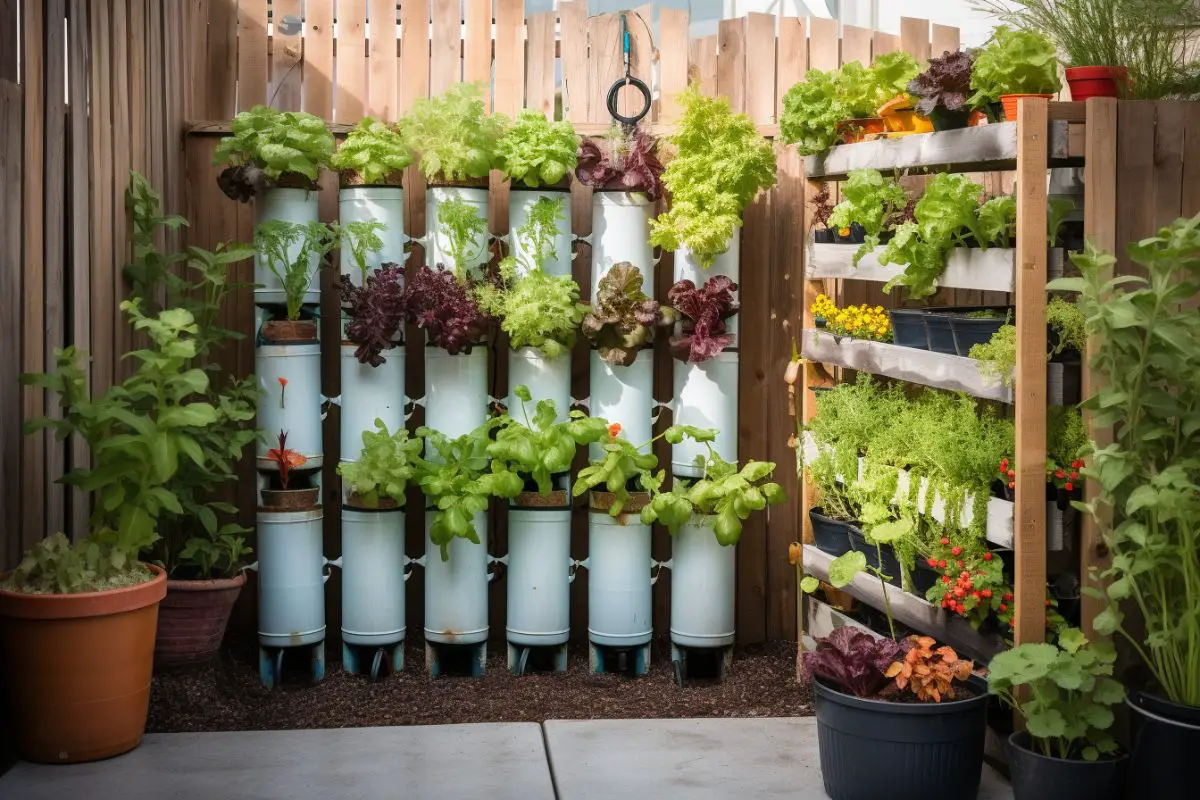Are you tired of battling with unpredictable weather, pests, and soil quality in your traditional garden? It’s time to step into the future of gardening and embrace the world of hydroponics.
By growing plants without soil and using a nutrient-rich water solution instead, you’ll not only save space but also enjoy healthier, more sustainable produce right from your backyard.
Imagine having access to fresh fruits, vegetables, and herbs all year round – it’s possible with the magic of hydroponic gardening.
In this comprehensive guide, we’ll explore everything you need to know about setting up your own backyard hydroponic garden – from selecting the perfect system type to mastering plant care techniques.
You’ll be amazed at how much control you have over your garden’s environment when utilizing a soil-less approach.
With our detailed instructions and up-to-date research by your side, get ready to unlock the secrets behind successful hydroponic gardening and transform the way you grow delicious and nutritious food for yourself and your family.
So let’s dive in and start cultivating a greener future together!
Outdoor vs Indoor Hydroponic Growing
When considering setting up a hydroponic garden, it’s crucial to weigh the pros and cons of indoor versus outdoor growing to ensure your success.
Advantages and disadvantages of indoor hydroponic growing include precise control over environmental factors and potential space limitations.
Benefits and challenges of outdoor hydroponic gardening include natural sunlight exposure and fluctuations in weather conditions that may impact your plants’ growth.
Pros and Cons of Indoor Hydroponic Growing

Indoor hydroponic growing offers its own unique set of advantages and challenges, so let’s delve into the pros and cons to help you decide if it’s right for you.
One major advantage of indoor hydroponic gardening is that it allows for year-round cultivation, regardless of outdoor weather conditions. This means that your backyard hydroponic garden can thrive even during winter months when traditional outdoor gardening would be impossible.
Additionally, an indoor setup provides more control over environmental factors such as temperature, humidity, and light exposure. With the use of grow lights and other specialized equipment, you can create an optimal environment tailored specifically to your plant’s needs.
However, there are some drawbacks to consider when choosing indoor hydroponic systems over outdoor options:
- Initial cost: Setting up a high-quality indoor hydroponic garden may require a significant investment in equipment like grow lights, ventilation systems, and climate-control devices.
- Space limitations: Depending on the size of your living space or designated growing area, you may find it challenging to accommodate larger plants or multiple varieties within the confines of an indoor garden.
- Energy consumption: Indoor gardens rely heavily on artificial lighting and climate-control devices that can contribute to higher energy bills.
Despite these potential drawbacks, many hobbyists and professional growers alike find that the benefits offered by indoor hydroponic gardening outweigh any disadvantages.
By carefully weighing these pros and cons against your personal goals and resources, you can make an informed decision about whether or not this method is suitable for your backyard hydroponic garden ambitions.
Pros and Cons of Outdoor Hydroponic Growing

Now that you’ve explored the world of indoor hydroponics, let’s dive into the pros and cons of taking your hydroponic growing outdoors to see if it’s a better fit for you.
Outdoor hydroponic gardening can be a great way to grow fresh fruits, vegetables, and herbs without needing soil or a traditional garden.
Just like indoor hydroponics, there are several types of outdoor systems available such as nutrient film technique (NFT), aeroponics, and deep water culture (DWC).
The key factors to consider when deciding whether an outdoor hydroponic system is right for you include space availability, climate conditions, pest control strategies, and overall maintenance requirements.
To help weigh the benefits and drawbacks of outdoor hydroponics more easily, take a look at this comparison table:
| Pros | Cons | Neutral |
|---|---|---|
| Increased growth rates & yields compared to traditional gardens | More vulnerable to pests & environmental factors than indoor systems | Variety of outdoor-specific hydroponic systems available |
| No need for soil or tilling – less labor-intensive | Some climates may limit year-round growing potential | Nutrient solution management is still important for optimal plant health |
| Easier water management due to natural evaporation & rainfall integration | May require additional infrastructure (e.g., greenhouse) in certain regions | Local regulations may impact setup or operation |
Keep in mind that while some challenges exist with outdoor hydroponic gardening—such as increased vulnerability to pests—there are also many benefits.
For example, you’ll likely experience faster growth rates and higher yields than with a traditional garden.
Additionally, managing your water supply can be easier since natural evaporation will occur outside rather than being trapped inside an enclosed space like indoors.
Ultimately, by considering these pros and cons alongside your personal goals and preferences for gardening style—as well as any local regulations—you’ll be well-equipped to decide if venturing into the world of outdoor hydroponics is right for you.
System Types and Setup
Ironically, it’s not rocket science to set up your very own green oasis with various system types and configurations in the comfort of your backyard.
To create a successful hydroponic garden, you need to consider factors such as space availability, budget, and desired crop yield.
Some popular outdoor hydroponic systems include Nutrient Film Technique (NFT), Deep Water Culture (DWC), Aeroponics, and Ebb and Flow.
You can purchase an outdoor hydroponic garden kit or build one yourself using materials like PVC pipe for the frame, a water reservoir to hold nutrient-rich water, and suitable growing mediums.
Ryan Hydroponic Grow Kit 3 Layers
Hydroponics Growing System
- Energy-saving Design
- Simple to Assemble
- 3 Layers 108 Sites
- Inexpensive
When setting up your outdoor hydroponic system, location is crucial for optimal growth conditions. Choose a spot that receives ample sunlight throughout the day but also has some shade during peak hours; this will help prevent temperature fluctuations that may negatively affect plant growth.
Ensure that there is enough room around the garden for proper air circulation – this reduces humidity levels and minimizes problems like mold or pests. Additionally, make sure you have easy access to water sources and electricity if needed for pumps or other equipment such as lights or heaters.
As you begin assembling your backyard hydroponic garden, keep in mind that cleanliness is vital when dealing with any type of hydroponics setup.
This means regularly disinfecting all components including the water reservoirs, tubing system, growing trays or containers before adding new plants into your system.
Another essential aspect of maintaining a thriving hydroponic garden is monitoring pH levels frequently – ideally daily – since varieties of plants require different pH levels for optimal nutrient absorption.
Also remember to change out nutrient solutions on time; this ensures that plants receive proper nutrition without overloading them with salts or minerals which could lead to deficiencies or toxicities.
By carefully attending to these details while selecting appropriate system types and configurations tailored to your specific needs, you’ll be well on your way towards enjoying bountiful harvests from your backyard hydroponic garden.
Light Source and Heat
When it comes to light sources and heat management, you’ve got some crucial decisions to make for your outdoor green paradise. A quality light source is essential for the proper growth of your plants in a backyard hydroponic garden.
While natural sunlight is an excellent and free option for outdoor hydroponic gardens, it’s important to keep in mind that weather conditions can vary greatly, impacting the amount of sunlight your garden receives on any given day.
To ensure consistent light exposure throughout the growing season, you may want to consider supplemental lighting options.
Supplemental lighting can make all the difference when it comes to providing the necessary light spectrum and intensity for optimal plant growth.
There are several types of artificial lights available that can complement natural sunlight in your outdoor hydroponic system: fluorescent lights (CFL or T5), high-intensity discharge (HID) lamps such as metal halide (MH) or high-pressure sodium (HPS), and light-emitting diode (LED) fixtures.
Each type has its advantages and disadvantages; therefore, it’s essential to research which one best suits your specific needs based on factors like energy efficiency, initial cost, lifespan, and overall performance.
Heat management is another critical factor that plays a significant role in maintaining a thriving backyard hydroponic garden. Outdoor gardens can be subjected to fluctuating temperatures as well as humidity levels due to ever-changing weather conditions.
It’s vital to monitor temperature ranges closely – too much heat might cause stress or wilting of plants, while insufficient warmth could slow down their growth rate or even halt development altogether.
Install shade cloth or reflective material around your system if needed during extreme heat spells; this will help protect delicate plants from sunburns while reducing water evaporation rates within the system.
Similarly, during cooler months, consider using insulated covers or enclosures with heaters for protection against frost damage – always taking care not to overheat enclosed areas where sensitive crops reside.
Remember, a harmonious balance of light and heat is the key to unlocking your backyard hydroponic garden’s full potential.
Water and pH Management

You’re probably wondering about water and pH management, right? Well, buckle up because mastering these elements is crucial to growing vibrant plants that’ll make your outdoor oasis flourish.
The first step in water and pH management is to have a proper understanding of the water and nutrient solution you’ll be using for your backyard hydroponic garden.
It’s essential to know the source of your water supply as it could contain trace minerals or contaminants that might affect plant growth. Furthermore, you should always use a high-quality nutrient solution specifically designed for hydroponics, providing all the macro and micronutrients required by your plants.
Maintaining an appropriate pH level in your outdoor hydroponic system is critical because it directly affects the plants’ ability to absorb nutrients from the water. Ideally, most plants thrive in a slightly acidic environment with a pH range between 5.5 and 6.5.
To keep track of this, invest in a reliable digital pH meter to monitor the levels regularly – at least once every two days – as well as whenever you change or add new nutrient solutions.
Use pH adjusters like phosphoric acid or potassium hydroxide to correct any imbalances found during testing if necessary. And don’t forget about keeping an eye on those nutrient levels too!
Routinely test for deficiencies or toxicities through visual inspection (e.g., yellowing leaves) or more precise methods such as leaf tissue analysis. Your choice of growing medium also plays a significant role in managing the system’s moisture and pH levels.
A quality medium should provide adequate support while allowing for proper drainage and oxygenation of plant roots; popular options include coconut coir, perlite, vermiculite, expanded clay pellets, or Rockwool cubes, depending on preference and specific plant requirements.
Regularly inspect root systems for signs of stress due to incorrect moisture content (too wet/dry) or uneven distribution among roots – healthy roots should be white or cream-colored and firm to the touch.
By diligently monitoring water quality, pH levels, nutrient balance, and growing medium health in your backyard hydroponic garden, you’ll see impressive results from your well-cared-for plants.
Plant Selection and Pollination
Now that we’ve covered water and pH management let’s dive into choosing the right plants for your system and ensuring successful pollination!
Plant selection is a crucial aspect of creating a thriving backyard hydroponic garden. As you may be aware, not all plants grow well in hydroponic systems, so it’s essential to choose those that are compatible with this method of cultivation.
When selecting plants for your outdoor growing space, consider factors such as sunlight requirements, temperature tolerance, and growth habits.
Some popular choices for hydroponic gardens include leafy greens like lettuce and spinach; herbs like basil, mint, and oregano; and smaller fruiting plants like strawberries or cherry tomatoes.
Pollination plays a vital role in the production of fruits and vegetables in your hydroponic garden. In traditional soil-based gardens, pollination occurs through natural means such as wind or insect activity.
However, since many hydroponic gardens are located indoors or within controlled environments like greenhouses, additional steps may be necessary to ensure successful pollination.
For outdoor growing spaces where insects are present but their population might not be sufficient for effective pollination (or if you’re growing self-pollinating plants), you can assist the process by manually transferring pollen from one flower to another using a small brush or even your fingertip.
Achieving success in your backyard hydroponic garden depends heavily on making informed decisions about plant selection and taking appropriate measures to promote healthy pollination.
Carefully choosing which plants to grow based on compatibility with hydroponics systems as well as considering sunlight requirements and temperature tolerance levels specific to each species, will allow you to maximize productivity while minimizing potential issues related to plant health.
Additionally, being proactive about promoting proper pollination ensures that both fruit-bearing crops flourish throughout each stage of growth – ultimately leading towards an abundant harvest season after season!
Pest Control and Monitoring
It’s no secret that dealing with pesky critters and monitoring plant health are essential components of maintaining a thriving outdoor hydroponics haven.
Pest control and monitoring in your backyard hydroponic garden can be quite different from traditional soil-based gardening, as the absence of soil means fewer hiding places for pests. However, this doesn’t mean your plants are immune to infestations.
Did You Know: By taking proper precautions and regularly checking on your plants, you can maintain a healthy home garden without resorting to harmful chemicals.
One of the first steps in managing pest control and monitoring for outdoor hydroponic systems is prevention. You can minimize the risk of pests by selecting pest-resistant plant varieties, regularly cleaning system components, and practicing proper crop rotation.
Additionally, introducing beneficial insects such as ladybugs or lacewings into your garden can help keep pest populations under control naturally. These predators will feed on common pests like aphids and whiteflies while leaving your plants unharmed.
It’s also essential to monitor your plants closely for any signs of pests or diseases by inspecting leaves, stems, roots, and fruits regularly.
If you do encounter an issue with pests in your backyard hydroponic garden, there are various non-toxic methods available to combat these unwanted visitors effectively.
Diatomaceous earth acts as a natural pesticide that dries out soft-bodied insects such as aphids or spider mites when they come into contact with it; simply dust it onto affected areas using a spray bottle or powder duster.
Neem oil is another popular organic option that works against many types of insects by interfering with their reproductive cycles; mix one tablespoon per gallon of water in a spray bottle and apply liberally to affected areas once a week until the problem subsides.
Remember that consistency is key when using natural pest control methods – it may take several applications before seeing significant results, but rest assured, knowing that you’re providing a safe environment for your plants and your family.
Seasonal Considerations
As you care for your outdoor oasis, it’s crucial to be mindful of seasonal considerations that can impact your plant’s growth and overall health.
A backyard hydroponic garden relies on consistent environmental conditions for optimal results, which means that changes in temperature, humidity, and sunlight throughout the year can pose challenges. To overcome these obstacles and maintain a thriving outdoor hydroponics system, you’ll need to adjust your setup accordingly based on the season.
During the warmer months, high temperatures and intense sunlight can lead to excessive heat within your hydroponic system. This not only increases water evaporation but also causes nutrient imbalances due to rapid plant growth.
To combat this issue, consider installing shade cloth over your garden area to reduce direct sunlight exposure while still allowing filtered light through.
Additionally, ensure proper ventilation is provided by placing fans around the growing area or utilizing natural wind currents when possible. Air movement helps keep plants cool and prevents moisture buildup that could promote diseases like mold or root rot.
When colder seasons approach, maintaining an ideal water temperature becomes essential as cooler temperatures slow down nutrient absorption rates in plants’ roots.
It’s essential to monitor water temperature regularly and use a submersible heater if necessary to maintain a stable range (generally between 65-75°F).
Insulating your reservoir with blankets or foam insulation boards can also help retain warmth during chilly nights. Lastly, consider incorporating cold-tolerant crops into your backyard hydroponic garden during winter months, such as kale, spinach, or lettuce varieties adapted for cooler weather conditions.
By adapting your outdoor hydroponics system based on seasonal considerations like climate fluctuations and crop selection, you’ll support resilient plant growth all year round!
Conclusion
In conclusion, your backyard hydroponic garden is a rewarding and sustainable endeavor that can provide fresh produce all year round.
With proper planning, attention to detail, and dedication, you’ll soon master the art of hydroponic gardening.
As the old adage goes, “You reap what you sow.” Invest time and effort into understanding this innovative form of cultivation, and you’ll enjoy bountiful harvests that not only nourish your body but also nurture your soul.
Finally, if you are all ready to do this, we recommend you check out: How much does it cost to setup Hydroponic at home.
